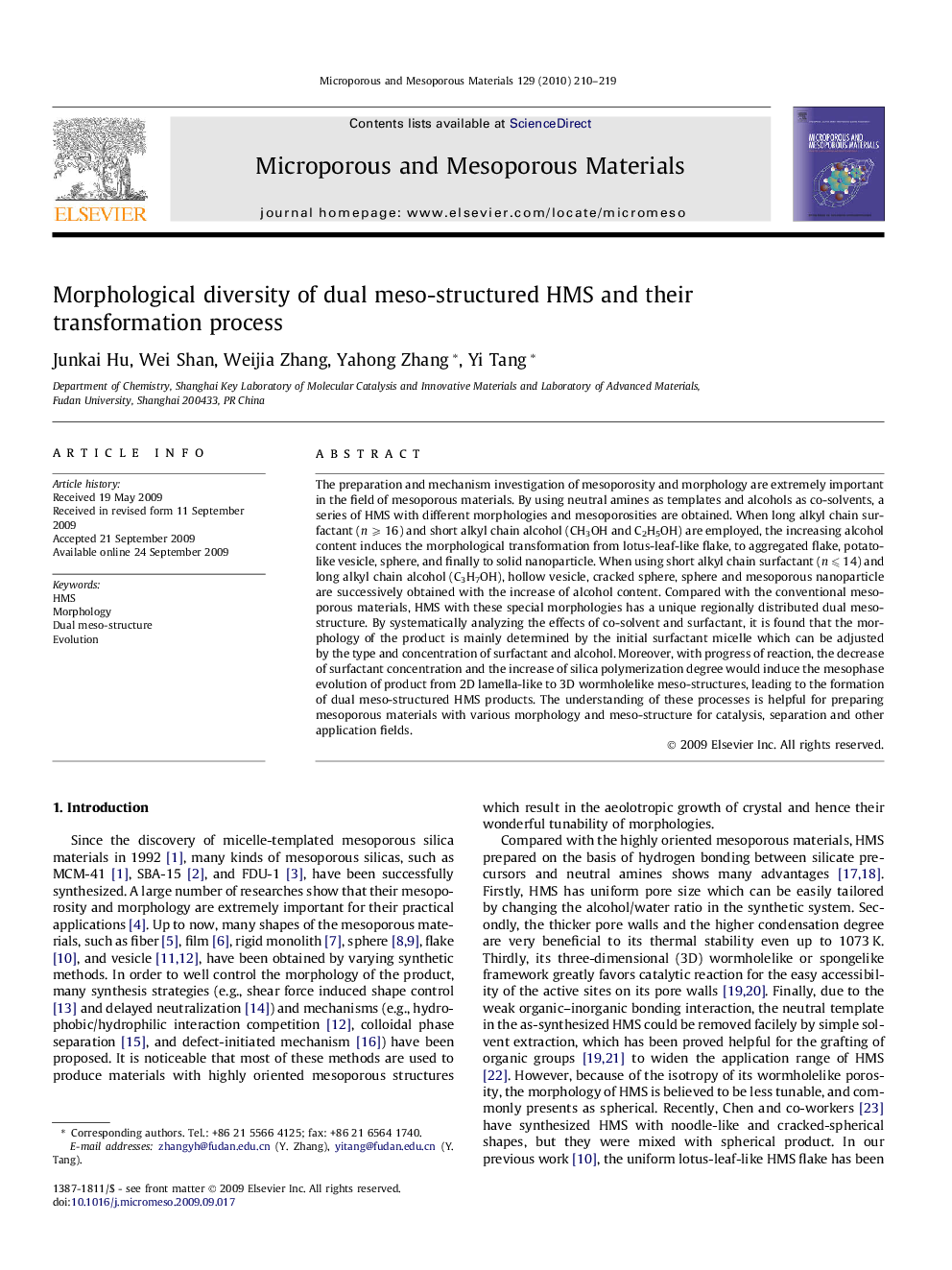| Article ID | Journal | Published Year | Pages | File Type |
|---|---|---|---|---|
| 75673 | Microporous and Mesoporous Materials | 2010 | 10 Pages |
The preparation and mechanism investigation of mesoporosity and morphology are extremely important in the field of mesoporous materials. By using neutral amines as templates and alcohols as co-solvents, a series of HMS with different morphologies and mesoporosities are obtained. When long alkyl chain surfactant (n ⩾ 16) and short alkyl chain alcohol (CH3OH and C2H5OH) are employed, the increasing alcohol content induces the morphological transformation from lotus-leaf-like flake, to aggregated flake, potato-like vesicle, sphere, and finally to solid nanoparticle. When using short alkyl chain surfactant (n ⩽ 14) and long alkyl chain alcohol (C3H7OH), hollow vesicle, cracked sphere, sphere and mesoporous nanoparticle are successively obtained with the increase of alcohol content. Compared with the conventional mesoporous materials, HMS with these special morphologies has a unique regionally distributed dual meso-structure. By systematically analyzing the effects of co-solvent and surfactant, it is found that the morphology of the product is mainly determined by the initial surfactant micelle which can be adjusted by the type and concentration of surfactant and alcohol. Moreover, with progress of reaction, the decrease of surfactant concentration and the increase of silica polymerization degree would induce the mesophase evolution of product from 2D lamella-like to 3D wormholelike meso-structures, leading to the formation of dual meso-structured HMS products. The understanding of these processes is helpful for preparing mesoporous materials with various morphology and meso-structure for catalysis, separation and other application fields.
